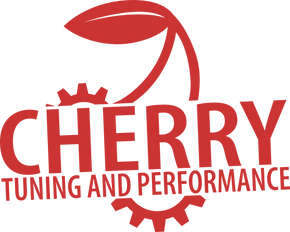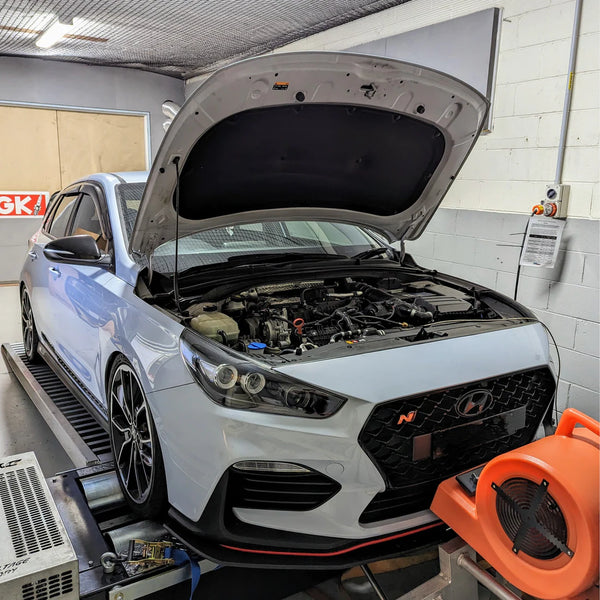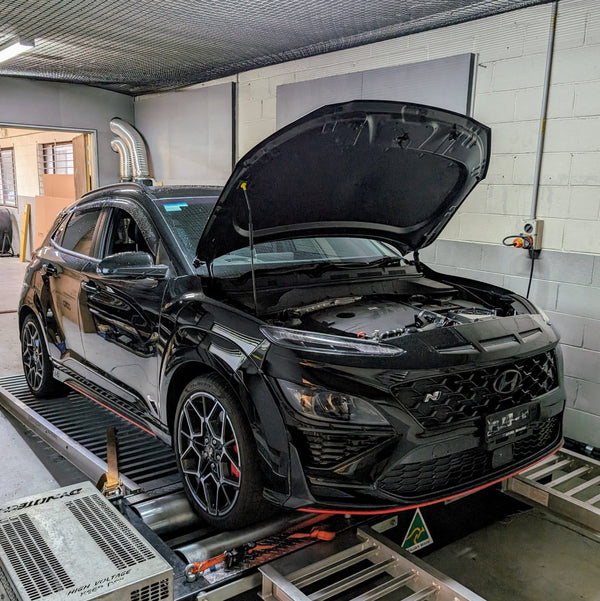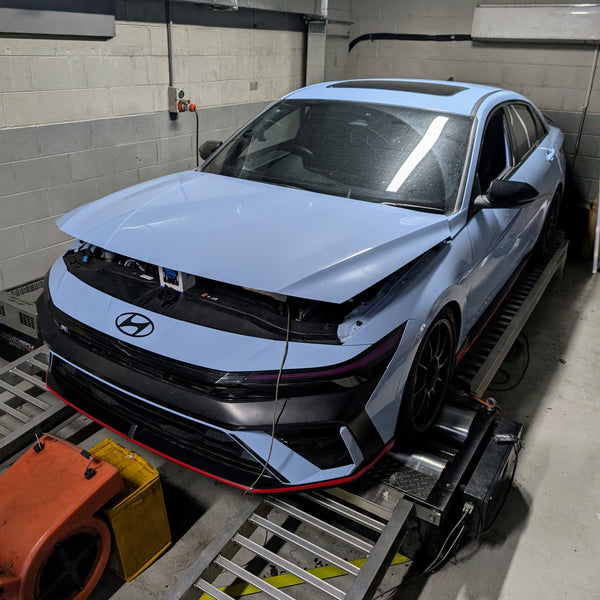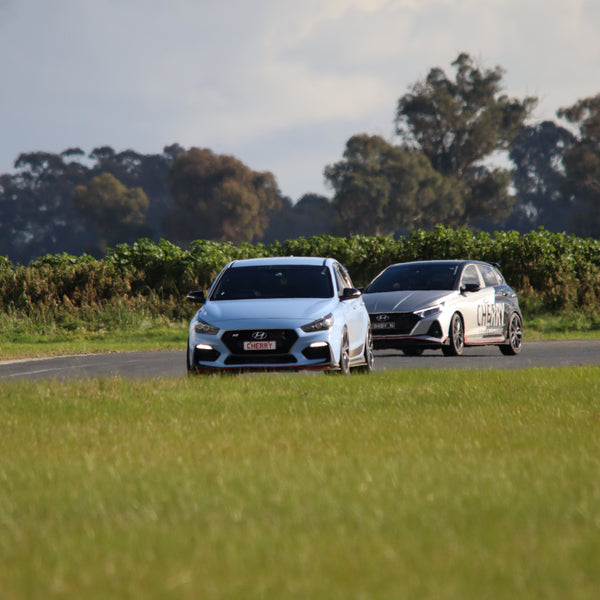The Ultimate Guide to Custom Tuning at Cherry
G'day and welcome to our guide on getting your car tuned with us.
Whether you're thinking about popping into our workshop for an in-house tune or doing it yourself from home with an EK1 device, this guide will walk you through how it all works. We'll cover the options, the process, and what you can expect, with no fluff. If you want to get the most out of your Kia or Hyundai, moving beyond the factory settings is the best way to do it, and we're here to show you how.
How to get your tune
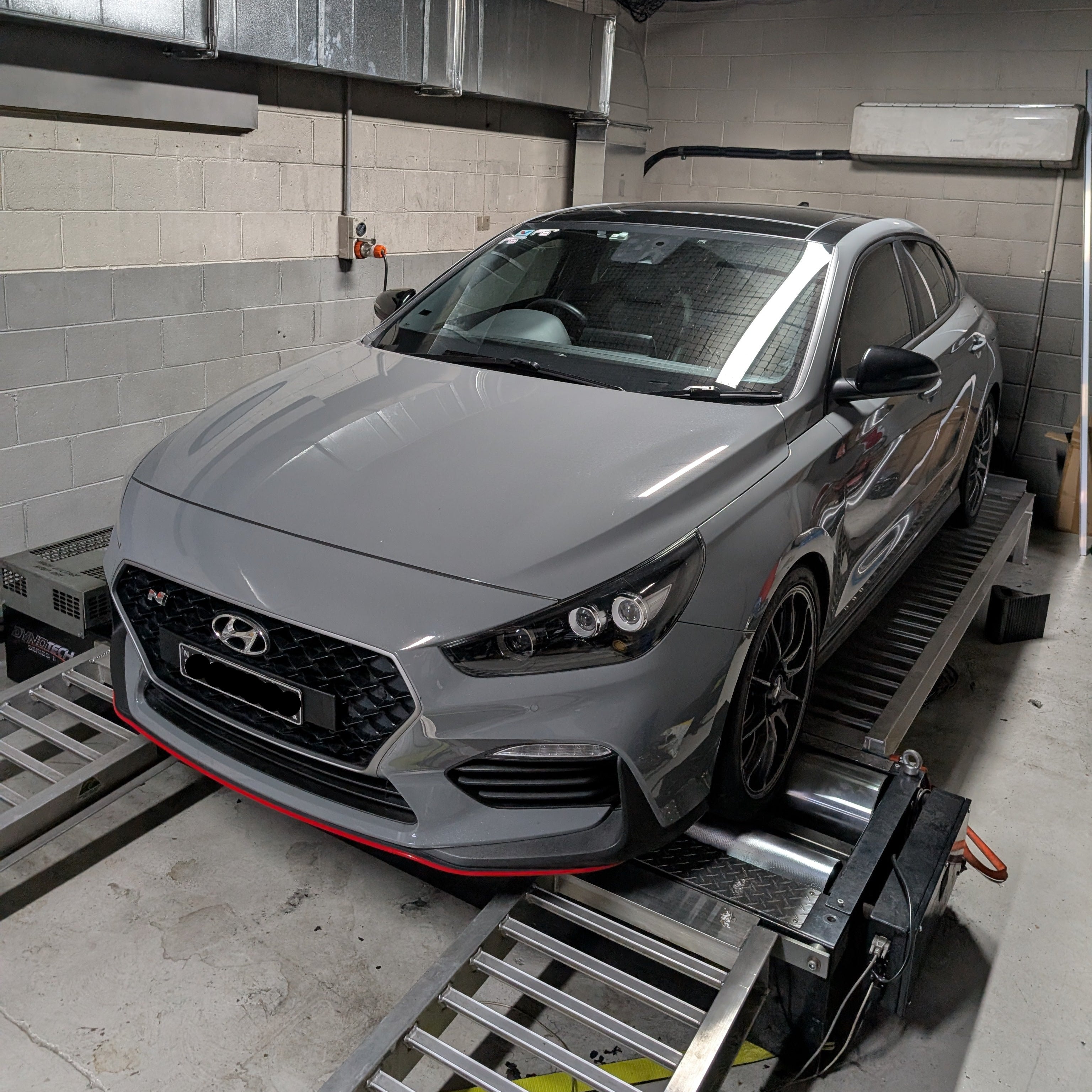
In-House Tuning at Our Workshop
For anyone who prefers to have us handle everything, our in-house tuning service is the go. You bring your car to our workshop in Hornsby, and our team manages the whole process, from fitting parts to testing.
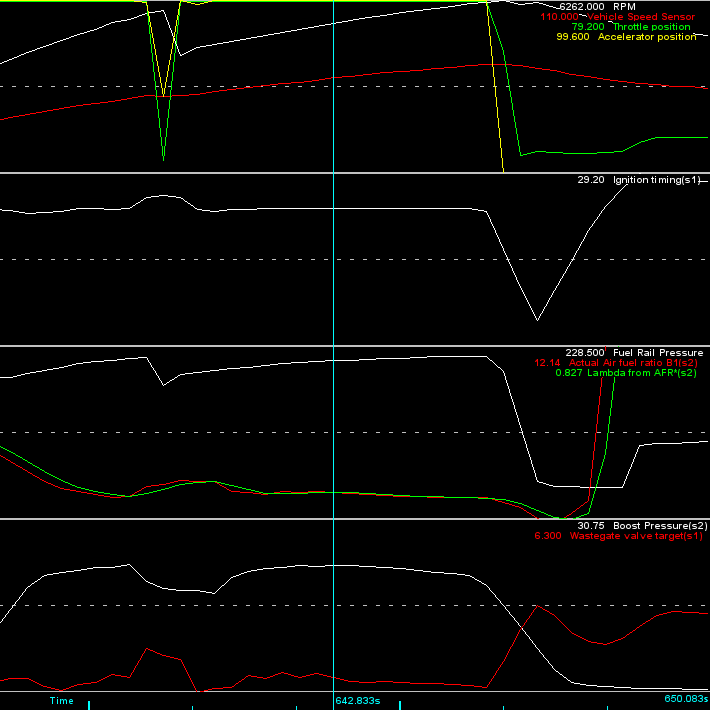
Remote Custom Tuning with an EK1 Device
For those who can't make it to our workshop or prefer to do things from home, our remote tuning service using the EK1 device is a powerful and flexible option, allowing us to tune your car from anywhere.
In-House Tuning Options
Pre-Written Tune
- What it is: With this option, we load one of our well-tested CTxxx pre-written tune files straight into your car's ECU. These files are the result of thousands of hours of our own in-house development, data-logging, and refinement.
- What you get: A solid performance upgrade at a more affordable price. After loading the file, we perform a thorough road test to make sure everything is running perfectly.
- What you don't get: This service doesn't come with any extra custom options, and it does not include a dyno run, so you won't get a dyno printout.
Pre-Written Tune with Options
- What it is: We start by loading the same proven CTxxx tune file, but this option lets you pick and choose some extra features to personalise it.
- What you get: You get the flexibility to add or tweak popular features. After loading the file, we take the car for a comprehensive road test.
- What you don't get: This option doesn't include a dyno session, so there's no dyno printout. It's all about adding custom features to a tune we know works brilliantly.
Custom Dyno Tune
- What it is: This is the full-on, bespoke option for anyone who wants complete control over their tune and a dyno-verified result.
- What's involved: We strap your car to the dyno and build a tune specifically for your car's preferences, mods, and condition, making real-time adjustments based on live data.
- The Result: You'll walk away with a dyno sheet showing the peak power and torque. The real value is the peace of mind knowing your car was tuned exactly how you wanted it, for its specific purpose.
Tuning Remotely
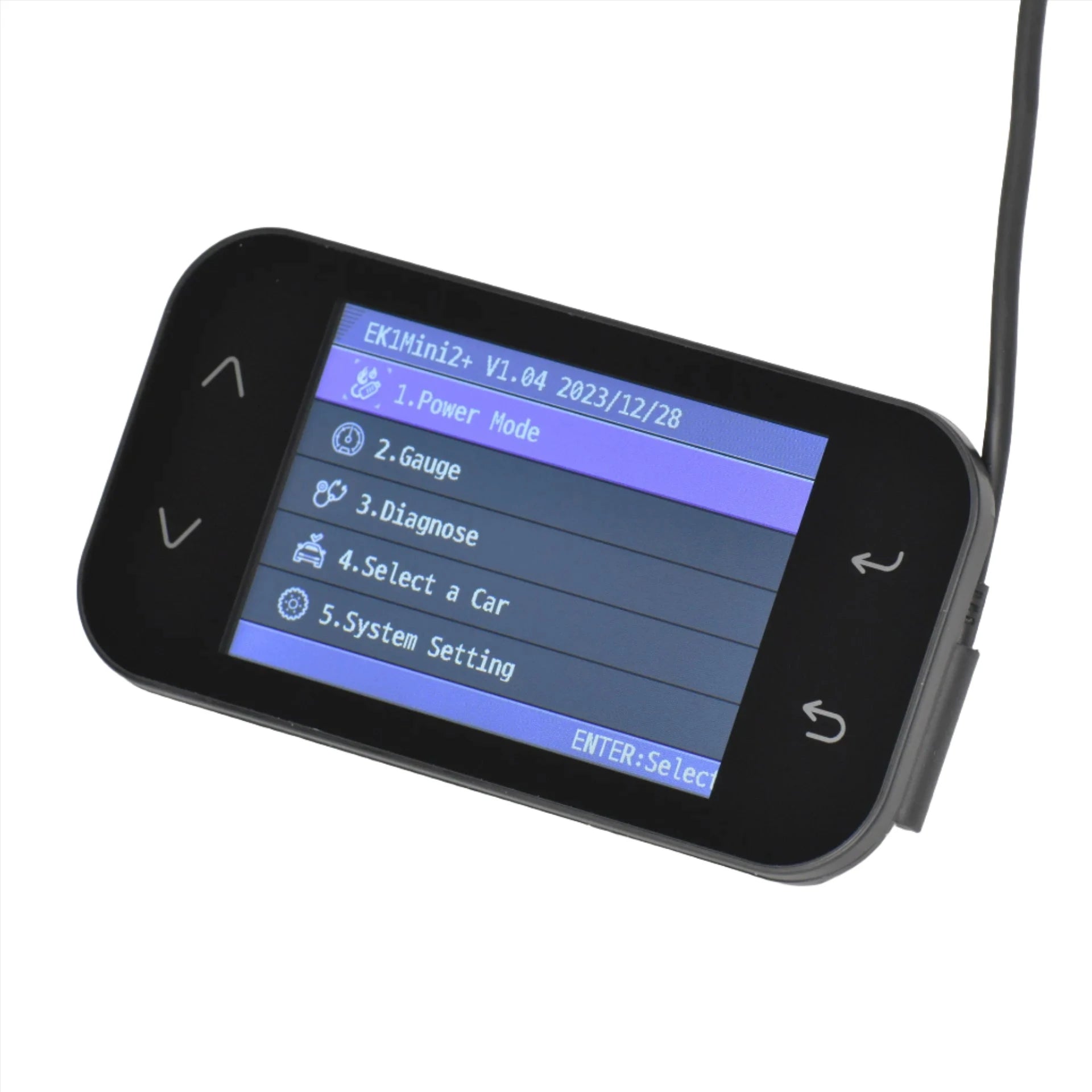
The Essential Hardware
Your EK1 Device
Your EK1 device is the critical bit of gear for remote tuning. Both versions are fully capable of reading, writing, and the all-important data-logging needed for revisions.
- EK1 Mini2+: A powerful and cost-effective tool for those not looking for live gauges and not hoping to do DCT tuning at any point. It handles every essential part of the remote tuning process, including flashing tunes and high-speed data-logging.
- EK1 Pro Tuning Tool: Does everything the Mini2+ can, but adds the convenience of a built-in, full-colour screen, allowing it to function as a standalone device with live gauges. It can also connect to the EK1 app on your phone (currently Android only) - which is currently the only way to do DCT tunes.
Step-by-Step
The Remote Tuning Process
Getting Started - Your Pre-Tuning Checklist
Before we can start, you need to get set up. This involves signing up at ek1tuning.com, and updating your EK1 device firmware using the EK1TOOL software.
If you have any issues, you'll almost always get them resolved faster by contacting the EK1 support team directly (There's a WhatsApp number on the ek1tuning page)
The Information We Need from You
- First, fill out our Tune Form here: [link].
- Get your ECU ID - How-to guide here: [link]
- Finally, send an email to tunes@cherrytuning.com.au with your ECU ID as the subject.
In the email, include your EK1 Serial Number, the last 6 digits of your VIN, car details, any notes/requests, and whether your ECU is patched or not.
Flashing, Logging, and Revisions
If required we'll guide you on reading your stock file, however for most customers this isn't required. Once you send your email request to us, you'll go into our tuning queue to have us build your tune and email it back.
For all communication, please stick to one single email chain. For revisions, you'll need to data-log a drive (under 30 mins) with some cruising and 2-3 full-throttle pulls, then send us the log file. For a more detailed guide, see here: [link]
What Goes Into Your Tune
Philosophy, Options & Packages
Now that we've covered the how, let's get into the what. This part of the guide breaks down our tuning philosophy, the custom features you can choose, and the packages we offer. These concepts apply to both our in-house Custom Dyno Tunes and all our remote EK1 tunes.
Choosing Your Tune Level & Aggression
Conservative Tune (Reliability > Power)
This is for the daily driver who wants a nice, enjoyable performance bump without pushing the hardware to its limits. We prioritise engine longevity and smooth driving with this one. (For remote tunes, this usually involves 0-2 revisions over about 2 weeks).
Standard Tune (Reliability = Power)
This is our most popular option and the sweet spot for most people. It delivers most of the available performance from your mods while keeping a healthy safety margin. Perfect for spirited street driving and the odd track day. (For remote tunes, this usually involves 1-4 revisions over 3-4 weeks).
Aggressive Tune (Power > Reliability)
For those who want to chase maximum performance from their current setup. This requires good quality fuel and a well-maintained car. You should be comfortable with the fact that chasing maximum power puts more stress on engine components. (For remote tunes, this usually involves 2-5 revisions over 6-8 weeks).
Advanced or Complex Tune (Pushing past the limit)
This is a full-on custom service for heavily modified cars with things like upgraded turbos, water/meth injection (WMI), port injection, E85 fuel, or Nitrous (NOS). The tuning process is much more involved, takes longer, and requires extensive data analysis. (For remote tunes, this usually involves 5+ revisions over 12+ weeks).
Personalising Your Tune: Custom Features
Pops and Bangs (Optional Extra)
These aren't included by default. How we create them is important: we never add extra fuel to make pops. Instead, we manipulate the existing factory fuel-cut systems.
- For 2.0T N-Models: These cars have a factory "impulse combustion" structure. We work within this system, allowing us to safely change the length, intensity, frequency, and RPM points of the pops. We can even make them different in different gears.
- For Non-N Models: For cars that don't pop from the factory, we make use of the existing delay for the deceleration fuel cut-off. We can lengthen this delay and make use of the "coasting" fuel that's already there to create the effect without being wasteful or unsafe.
- Options: We offer a full range of options, from a mild burble to a "Crazy" mode for catless track cars, and we can even adjust the length of the pops. Just be mindful of your neighbours and local laws!
Idle Speed Increase (Available for all models)
We can give you a small increase, a larger increase, or a static idle speed of around 950 RPM, regardless of the driving mode. This makes the car feel a lot smoother at idle, especially if you have upgraded engine mounts, but it might use a tiny bit more fuel in traffic.
Ghost Cams (Available for 2.0T N-Models)
This is a popular one. It's a change we make to the Variable Valve Timing (VVT) at idle to give the car a lumpy, aggressive idle sound, a bit like an old-school V8 with a big cam. It works best when the car is fully warm with the A/C off. You might notice a little bit of "rev-hang" when you rev it at a standstill, which is normal.
Improved Launch Control (Available for 2.0T N-Models)
We tweak the factory launch control to be more aggressive, adding more torque, boost, and RPM to allow for harder and more consistent launches. Our focus is on functional, fast launches rather than just making noise for a 2-step effect.
Take-Off Mod / Clutch Mod (Manual 2.0T N-Models)
This makes taking off from a stop much easier by adjusting the "anti-stall" function. You can often get the car moving in traffic without even touching the accelerator.
Fan Mod (Available for 2.0T N-Models)
We can change the fan settings to keep the engine running a bit cooler, usually targeting around 90°C instead of the factory's 100°C, which is great for hard driving.
Exhaust Valve Mod (All N-Models, including i20N)
We can set the exhaust valve to be always open in N-Mode for maximum noise.
Hush Mod (All N-Models, including i20N)
The opposite of the above! We can set the valve to be closed in Normal/Eco at low RPM and idle, which is great for keeping the peace with your neighbours.
Torque-by-Gear (All N-Models, including i20N)
We can limit the torque in the lower gears (1st, 2nd, 3rd) to help reduce wheel spin and improve traction when you're launching the car hard.
Check out our pre-made hardware packages
Cherry Tuning Power Packages
More Details
Technical Deep-Dive and FAQ
ECU Patching (CANBOOT vs. OBD)
Long story short, you don't need to worry about "patching" your ECU before you tune it with us. The old way of doing things (OBD protocol) sometimes required a separate step to "unlock" the ECU. The newer method we use (CANBOOT) handles this automatically and safely during the first flash.
The one important thing is: If your ECU has been tuned or patched by someone else in the past, you must tell us. If it has an old OBD patch on it, we need to send you a file in a different format to avoid any conflicts.
How Boost & Timing is Calculated
With modern ECUs, there isn't really a single "boost target" or "ignition target." The ECU is constantly calculating. Ignition timing is worked out based on cylinder fill—basically, the more boost and air you have, the lower the timing needs to be for safety. The ECU also decides its own boost pressure targets based on the torque and airflow model we build. It will target however much boost is needed to hit its torque goal, within the limits we set. Our philosophy is to work with this clever system, allowing the ECU to make power safely and create the smoothest torque curve possible.
Why Boost Isn't Everything
A lot of people ask, "how much boost will I run?" but it's not the best question to ask when it comes to a turbo's lifespan. What really kills turbos is when they spin too fast (shaft speed). Boost is just a measure of pressure, which is basically resistance to flow. A car with a restrictive exhaust running 22psi could be spinning its turbo much faster and less safely than a car with a high-flow exhaust at the same pressure. We tune for the whole picture—airflow, efficiency, and safe turbo speeds—not just a peak boost number.
DCT Clutch Slip & How We Avoid It
A common problem with tuned DCT cars is clutch slip. Many other tunes get around this by "tricking" the transmission's computer (TCU). They tell the TCU the engine is making less torque than it really is, so the TCU doesn't apply enough clamping pressure on the clutches. This is a bad idea and leads to premature wear.
Our approach is different. We make sure the ECU and TCU are talking to each other honestly. We report the true, accurate torque values to the TCU, which allows it to respond correctly and apply the maximum safe clamping force. The end result is a DCT that can handle the power without slipping.
The Best Fuel to Use
Whatever the highest grade of fuel you can easily get is what we recommend. In Australia, we recommend 98RON first, and if that's not available, E10 (94RON) is our second choice. That might sound weird, but the single point of RON difference between 95 and 94 is more than made up for by the cooling benefits of the ethanol content in E10. We've tested it on the dyno, and E10 consistently makes the same power as 95RON. If you're in the US, 93 Octane is great, but we can tune for 91 if that's all you've got. At the end of the day, it's a custom tune, so we'll make it to suit whatever fuel you plan on running.
Things We Can't Do (Yet?)
Rolling Anti-Lag & Flex Fuelling: True rolling anti-lag or flex-fuel capabilities aren't simple functions you can just "turn on." They require serious reverse engineering of the ECU's operating system to create custom code and maps. While it's theoretically possible, and definitely on our long-term R&D roadmap, it's an extremely time-intensive process that isn't available yet.
Our Commitment to Safety (And What We Change)
We want to be crystal clear on this: we do not disable factory safety systems. All the important protective measures your car came with from the factory—like overboost protection, knock control, and temperature corrections—remain fully active in our tunes. Our whole philosophy is to work with the car's clever ECU to make power safely, not to bypass its safety nets. This means you get the best performance without compromising the long-term health of your engine.
However, we do make some logical changes:
- Catalyst Monitoring: For cars with a downpipe, we will generally turn off the P0420 (catalyst inefficiency) code to prevent a check engine light.
- O2 Sensors: We don't disable them. We do, however, make changes to the sensitivity of the downstream sensors to ensure they're still giving accurate data for fuel trims at idle and cruise.
- CN7N Octane Learning: Yes, we disable this frustrating feature. If your car is being tuned for high-grade fuel, there's no point leaving the aggressive learning model in place.

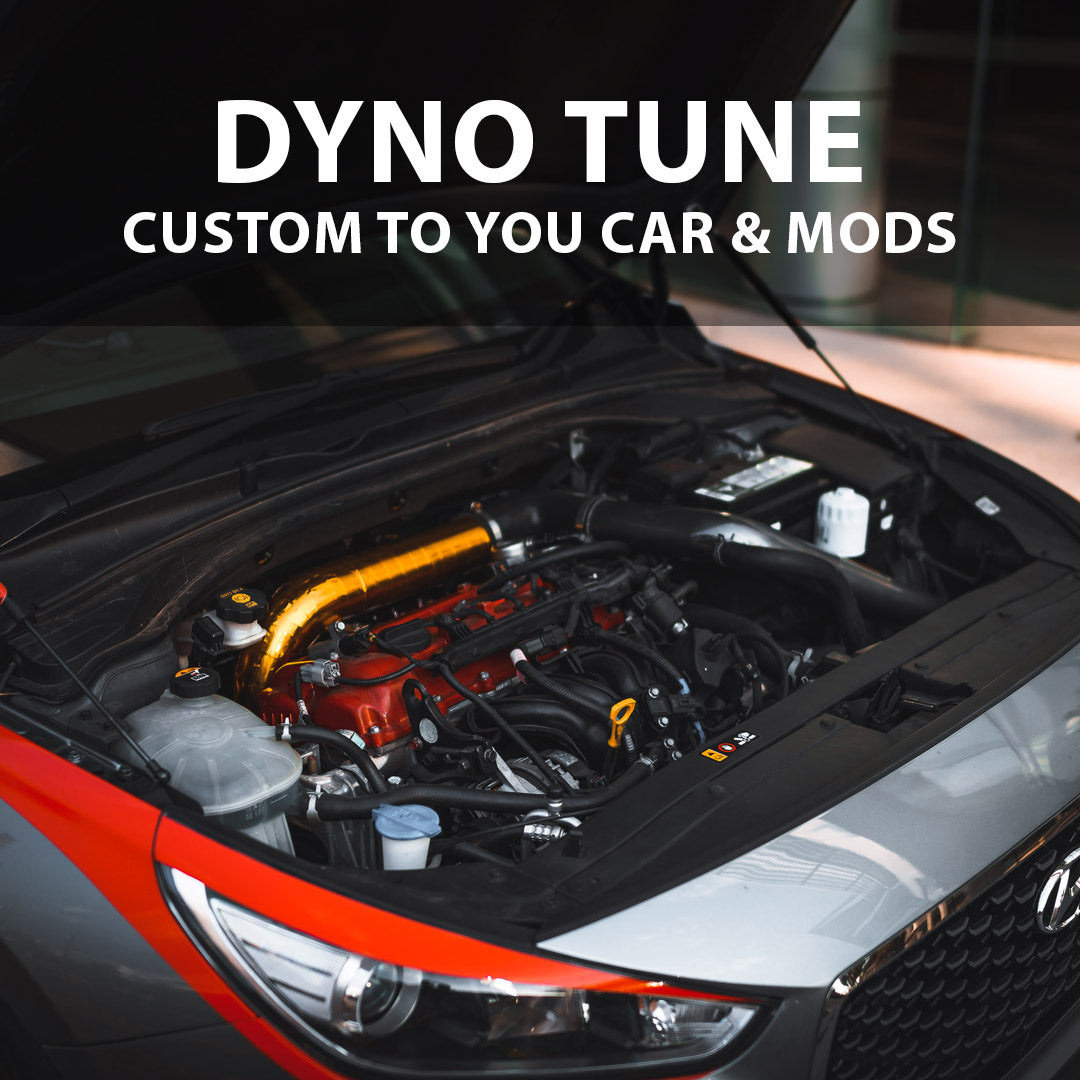
Looking To Buy?
EK1 Custom Tune File
Ready to purchase yourself a Custom Tune for your EK1 device?
Ready To Purchase?
Pay your dyno deposit
We require all customers booking in for a dyno tune to pay a deposit to secure their spot. Pay for your deposit then give us a call to lock in a time!
